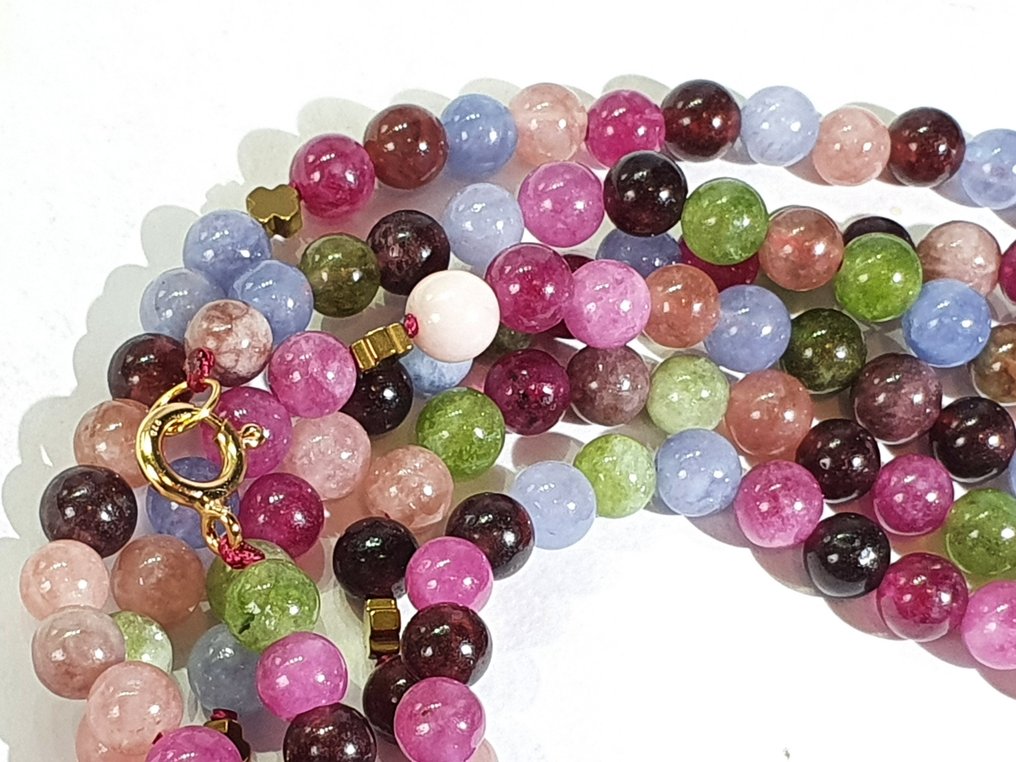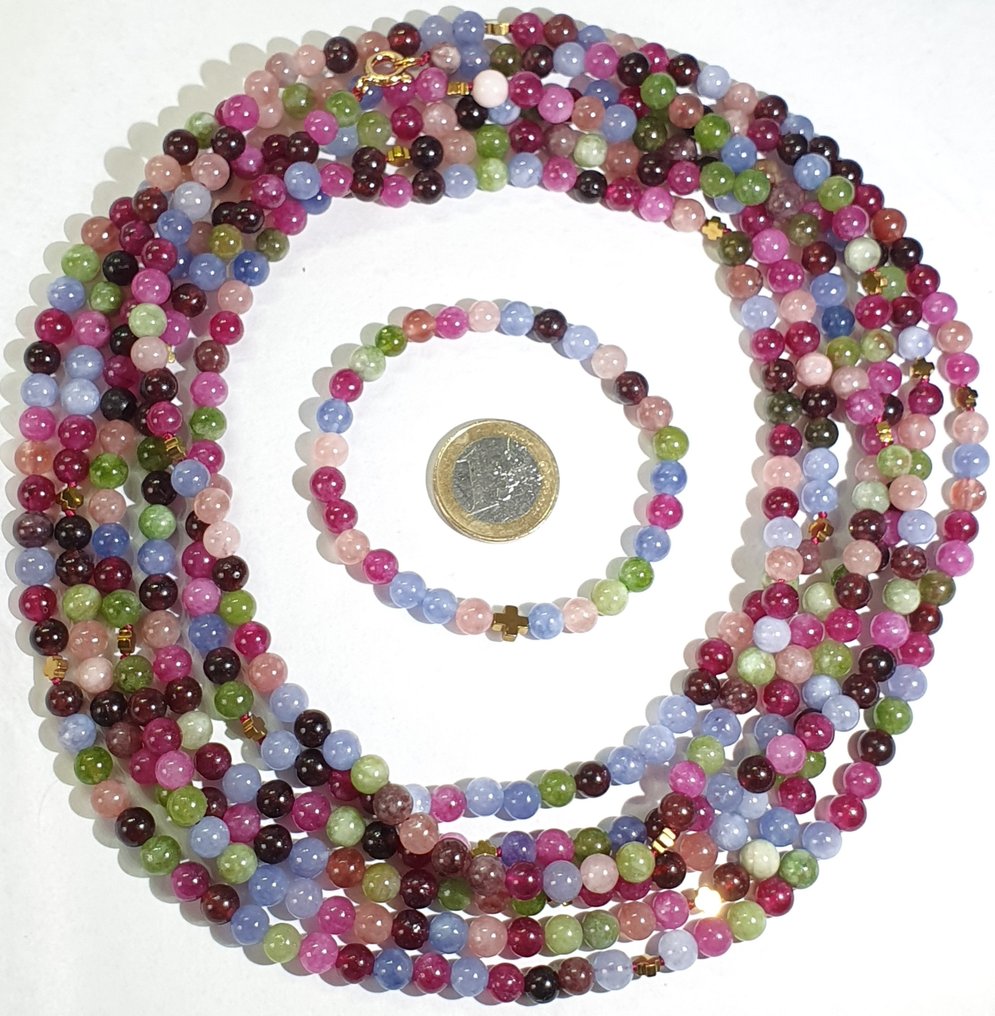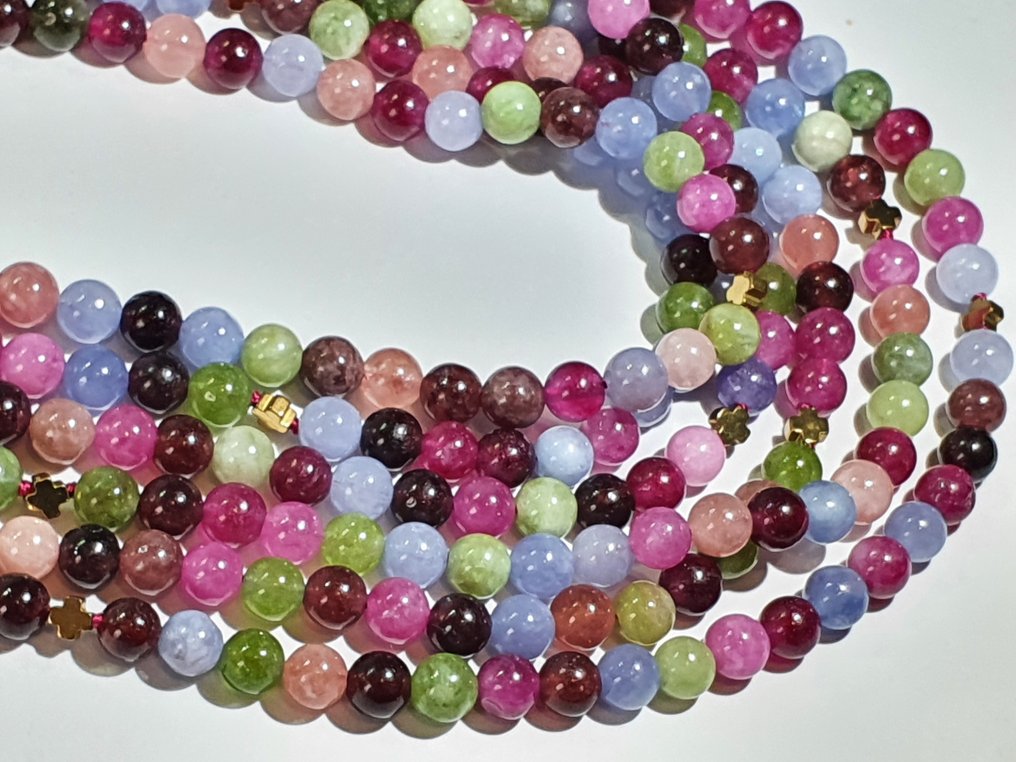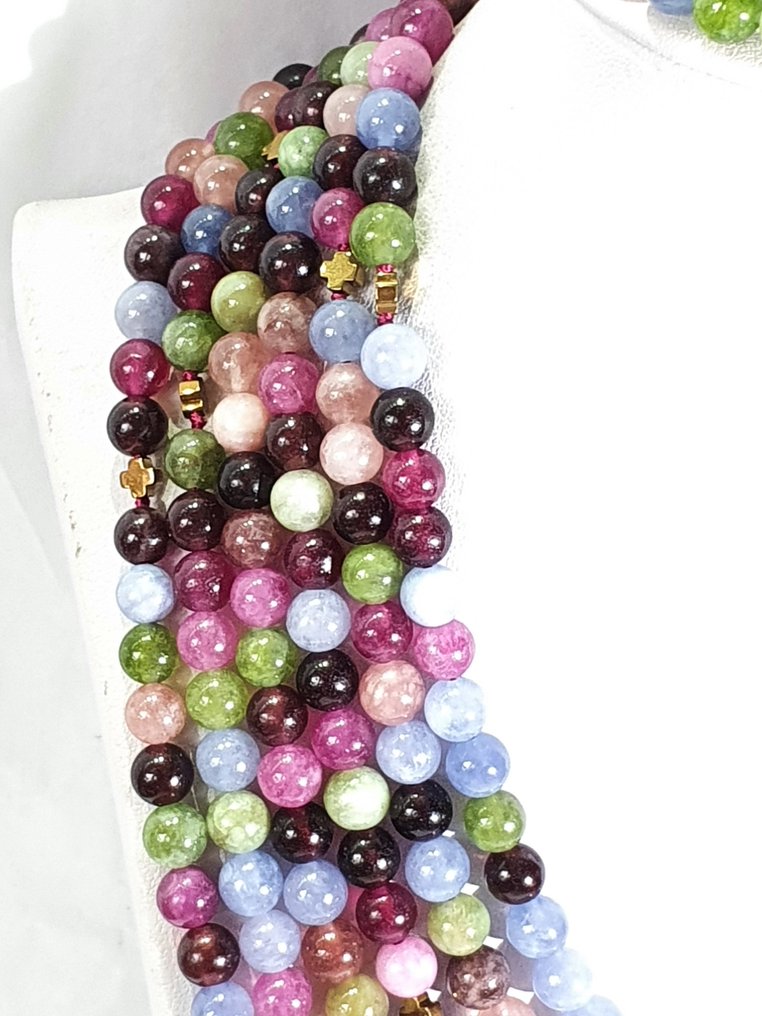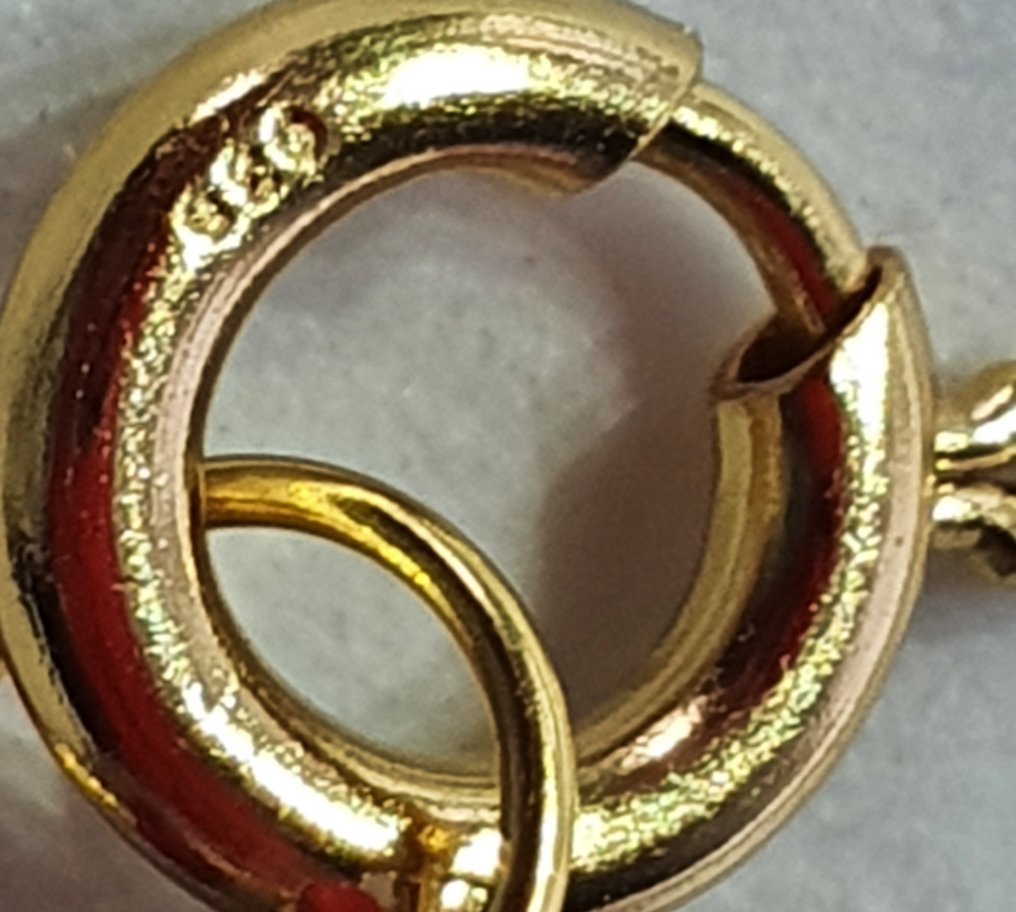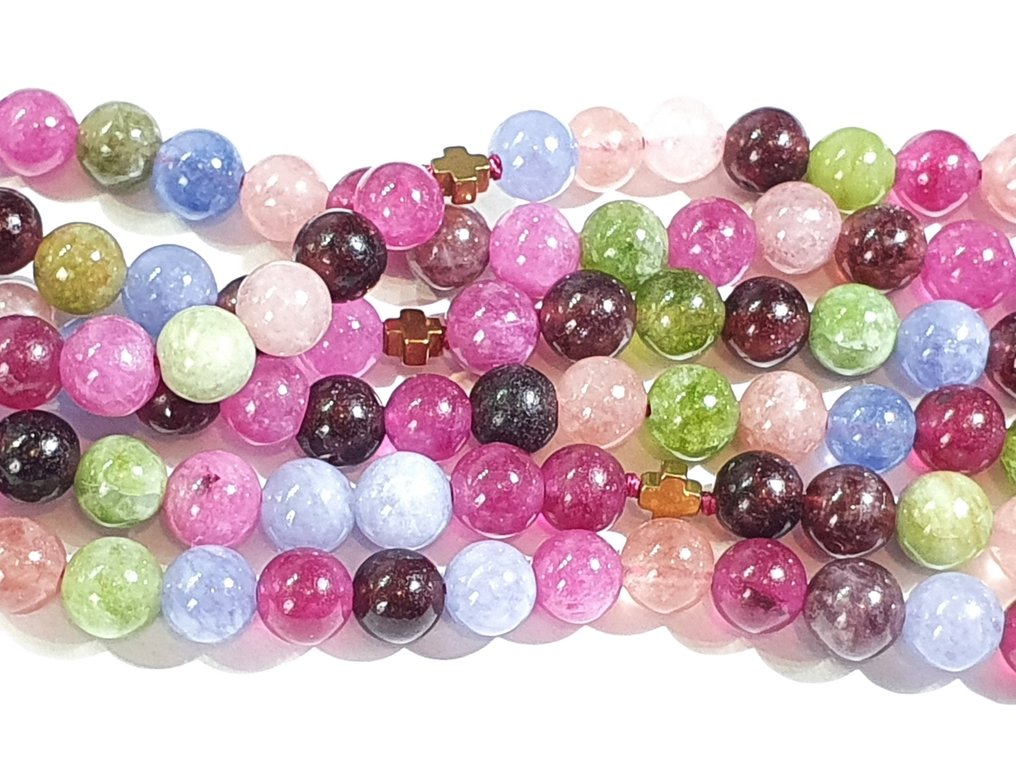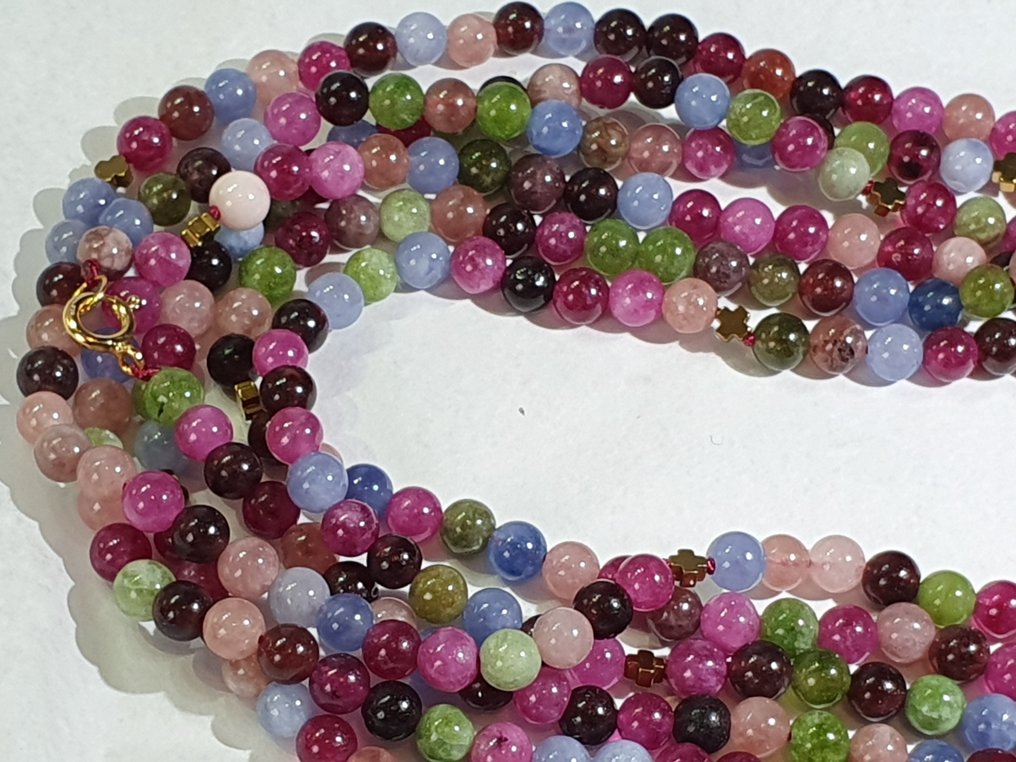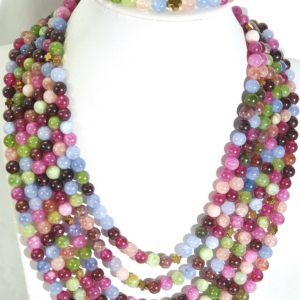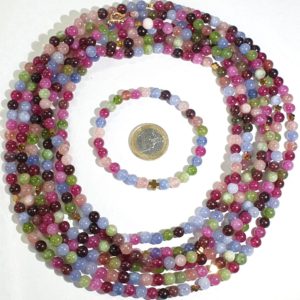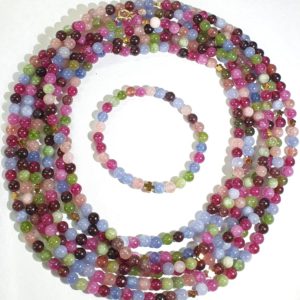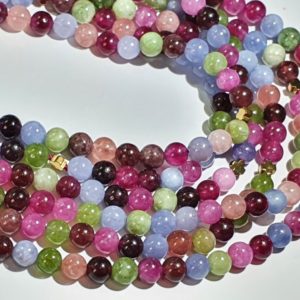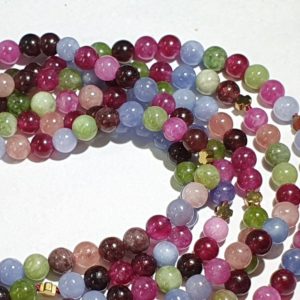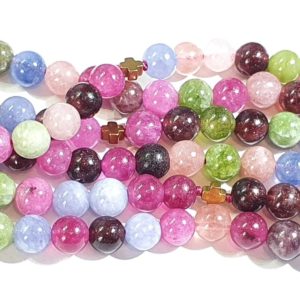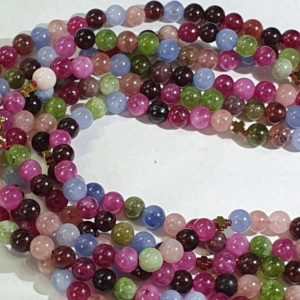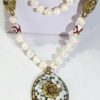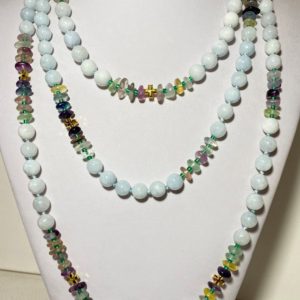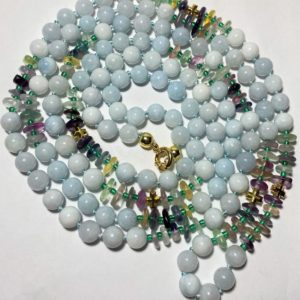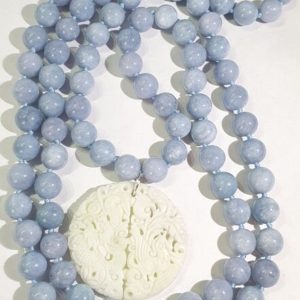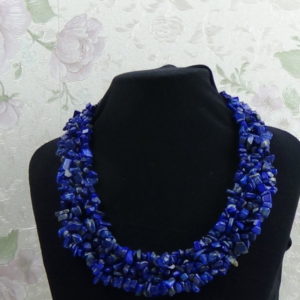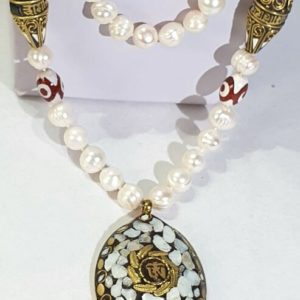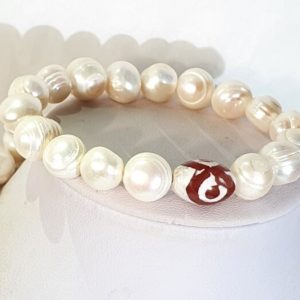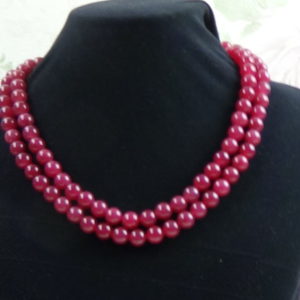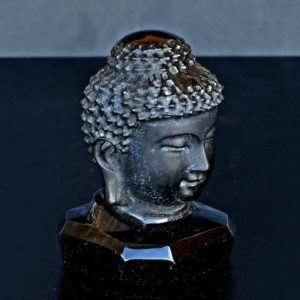Semi-precious gems – top grade – 925 silver gold plated brooch
667 £
Out of stock
an extra long necklace of hematite Greek crosses (protection and balance) and mixture of semiprecious stone gems (aquamarine, pink tourmalline, peridot, jade, garnet, carnelian, rose quartz, agate…) of high quality. The entire necklace has been spun by hand with knots on each cross and the clasp is made of gold plated 925 silver.
Material: aquamarine, pink tourmaline, peridot, jade, garnet, rose quartz… (top grade AAAA)
Size: 6/5mm diameter
Greek crosses made of gold plated hematite
Necklace length: 272 cm
Gold plated 925 silver clasp (marked “925”)
Professionally hand spun with knotts on each cross
Bracelet done in elastic band
Origin: Spain
gift boxes
Aquamarine is believed to have various positive qualities and benefits. Some of the common uses and associations of aquamarine include:
- Calming and soothing: Aquamarine is said to promote a sense of calmness and tranquility. It is often used to help reduce stress and anxiety, as well as to promote relaxation and emotional balance.
- Communication: Aquamarine is associated with improving communication skills and clarity of thought. It is believed to enhance self-expression and the ability to articulate thoughts and feelings effectively.
- Courage and confidence: Aquamarine is often called the “stone of courage” because it is believed to instill courage and confidence in the wearer. It can help in overcoming fears and obstacles, and promote a sense of empowerment.
- Healing and purification: Aquamarine is thought to have cleansing and purifying properties, both physically and emotionally. It is believed to help release negative energies and promote overall well-being.
- Creativity and inspiration: Aquamarine is said to stimulate creativity and encourage inspiration. It can help in accessing one’s inner creativity and expressing oneself more freely.
Overall, aquamarine is considered a versatile and beneficial gemstone that can be used for various purposes, including personal growth, emotional healing, and spiritual development.
Aquamarine is often associated with several archangels, who are considered powerful spiritual beings in various religious traditions. Some of the archangels associated with aquamarine include:
- Archangel Gabriel: Gabriel is known as the messenger archangel and is associated with communication, creativity, and intuition. Aquamarine is often linked to Gabriel due to its ability to enhance self-expression and clarity of thought.
- Archangel Michael: Michael is known as the protector archangel and is associated with courage, strength, and empowerment. Aquamarine’s association with courage and confidence makes it a good match for invoking the energy of Archangel Michael.
- Archangel Raphael: Raphael is known as the healing archangel and is associated with physical and emotional healing. Aquamarine’s properties of cleansing and purification align with Raphael’s healing abilities.
Overall, working with aquamarine while invoking these archangels can help amplify the gemstone’s energies and qualities, as well as aid in connecting with the specific qualities and guidance that each archangel represents.
Aquamarine is associated with several goddesses from different mythologies and belief systems. Some of the goddesses commonly linked with aquamarine include:
- Aphrodite (Greek): Aphrodite, the Greek goddess of love and beauty, is often associated with aquamarine due to its calming and soothing properties. It is believed that aquamarine can help cultivate love and harmony in relationships, making it a suitable stone for invoking Aphrodite’s energy.
- Yemaya (Yoruba): Yemaya, the Yoruba goddess of the sea, is often connected with aquamarine because of its association with water and its calming effects. Aquamarine is believed to enhance intuition and emotional healing, qualities that align with Yemaya’s nurturing and protective nature.
- Amethyst (Celtic): Amethyst, a Celtic goddess of healing and psychic abilities, is sometimes associated with aquamarine due to its purifying and cleansing properties. Aquamarine is believed to help release negative energy and promote overall well-being, making it a valuable tool for invoking Amethyst’s healing energies.
These goddesses are just a few examples of the divine feminine energies that are often linked with aquamarine. Working with aquamarine while invoking these goddesses can help amplify the gemstone’s properties and qualities, as well as aid in connecting with the specific aspects of the goddesses’ energy that resonates with the wearer.
Pink tourmaline, also known as pink tourmaline or rubellite, is associated with several goddesses and feminine energies from various spiritual traditions. Some goddesses commonly linked with pink tourmaline include:
- Venus (Roman): Venus, the Roman goddess of love, beauty, and desire, is often associated with pink tourmaline due to its connection to matters of the heart and emotions. Pink tourmaline is believed to promote love, compassion, and self-love, making it a suitable stone for invoking Venus’s energy of love and harmony.
- Freyja (Norse): Freyja, the Norse goddess of love, fertility, and beauty, is sometimes connected with pink tourmaline because of its association with emotional healing and inner peace. Pink tourmaline is believed to nurture positive emotions and balance the heart chakra, aligning with Freyja’s nurturing and harmonious energy.
- Kuan Yin (Chinese): Kuan Yin, the Chinese goddess of compassion and mercy, is also associated with pink tourmaline due to its gentle and soothing energy. Pink tourmaline is believed to promote self-compassion, empathy, and emotional healing, qualities that are aligned with Kuan Yin’s compassionate and nurturing nature.
These goddesses represent the nurturing, loving, and compassionate energies that are often associated with pink tourmaline. Working with pink tourmaline while invoking these goddesses can help amplify the gemstone’s properties and qualities, as well as aid in connecting with the divine feminine energy that resonates with the wearer.
Pink tourmaline is commonly associated with Archangels Ariel and Chamuel.
- Archangel Ariel: Archangel Ariel is known as the angel of nature, animals, and abundance. Pink tourmaline’s soothing and nurturing energy aligns with Ariel’s connection to the Earth and its creatures. Working with pink tourmaline while calling upon Archangel Ariel can help bring a sense of peace, compassion, and harmony to your life.
- Archangel Chamuel: Archangel Chamuel is often associated with love, relationships, and emotional healing. Pink tourmaline’s properties of promoting self-love, compassion, and emotional balance are in alignment with Chamuel’s energy. By working with pink tourmaline and invoking Archangel Chamuel, you can enhance feelings of love, forgiveness, and inner peace.
These archangels can help amplify the healing and nurturing properties of pink tourmaline when called upon during meditation, prayer, or intention setting. Together, they can provide guidance, support, and love in your spiritual journey towards emotional healing and self-discovery.
cross (crux quadrata): An old type of cross with arms of equal length.
It is the most absolute simplification of the symbol. It is the concentration in its pure state.
The meaning of the Greek Cross is that of protection and balance, due to its symmetrical shape with arms of the same size. It is also believed that the Greek cross is a representation of God and on the other hand the Latin cross that we all know is the representation of the crucifixion of Christ.
The Greek Cross despite the fact that its name indicates that it was born and used mainly in Greece, it is not. The Greek Cross makes its appearance in the East by the Christians who inhabited those territories. The cross was based on the Immisa Cross where Jesus died but with the stick shortened, giving it a symmetrical aesthetic to be able to see it in the same way from any direction.
It is believed that the use of this cross in the East was influenced by the True Cross found in Jerusalem. Helena of Constantinople, also known as Saint Helena, dedicated her life to finding the relics of the True Cross (the cross where Jesus Christ was crucified). She traveled to Jerusalem in about 326 to discover its location. She finally said to find the place where the true cross and the tomb of Jesus was located. Then her son Constantine built a church at the request of her mother in the same place where there was already an ancient temple erected to Venus (for the Romans) or Aphrodite (for the Greeks). This church was known as the Church of the Holy Sepulchre, located in the area of the old city of Jerusalem.
After finding the cross where Jesus Christ died, Saint Helena cut off the lower part of the Cross (approximately a fifth of its height) and sent it to Rome as a relic, known as the Lignum Crucis. She then left the remaining cross in Jerusalem, which, having been sawn, was left in the shape of a Greek Cross.
NO. OF ITEMS
OBJECT
MATERIAL
ESTIMATED PERIOD
COUNTRY OF ORIGIN
CONDITION
DIMENSIONS
WEIGHT
Related products
angels
angels
Uncategorized
Uncategorized



